Seagate GoFlex Slim 320GB: The World's Thinnest External HDD
by Anand Lal Shimpi on April 5, 2011 11:56 PM EST- Posted in
- Storage
- Seagate
- HDDs
- GoFlex
- GoFlex Slim
As a desktop user I never really jumped on the external storage craze. I kept a couple of terabyte drives in RAID-0 inside my chassis and there's always the multi-TB array in the lab in case I needed more storage. External drives were always neat to look at, but I never really needed any. My notebook's internal storage was always enough.
With the arrival of Sandy Bridge in notebooks however I've given the notebook as a desktop replacement thing a try. I've got enough random hardware if I need a fast gaming machine in a pinch, but for everything else I'm strictly notebook these days. As a result I've come to realize just how precious portable storage is. Most reasonably portable notebooks have one usable 2.5" bay at most (two if you don't mind sacrificing an optical drive). Network storage is great but what if you need something portable on the go with you?
I'm obviously a staunch advocate of spending your internal real estate on an SSD, but if you need the space you've gotta go mechanical for your external storage. If portability is what matters, an external 2.5" hard drive can be quite attractive as they're lightweight and can be powered over USB.
In the 2.5" world there are three predominant thicknesses available: 7mm, 9.5mm and 12.5mm. Most notebook drives are 9.5mm. You'll notice that Intel even ships many of its SSDs with a removable spacer to make them 9.5mm tall in order to maintain physical compatibility with as many notebooks as possible:

That black trim is removable for use in 7mm bays
Thicker drives are needed to accommodate more platters inside, but as platter densities increase so do the capacities of thinner drives. A couple of years ago Seagate announced the world's first 7mm thick 2.5" hard drive and earlier today, it announced the thinnest external 2.5" drive: the GoFlex Slim.
Originally called the GoFlex Thin at CES earlier this year, the GoFlex Slim measures 9mm tall thanks to its internal 7200RPM 7mm SATA drive.
The GoFlex Slim is actually a two-part device. There's the drive itself and a detachable GoFlex USB 3.0 adapter with a white LED power/activity light. The LED is always illuminated by default and lightly throbs when you access the disk. Remove the adapter and you can plug the GoFlex Slim into any other GoFlex compatible device. Seagate has also opened up the GoFlex standard so other manufacturers can build and ship GoFlex compatible devices royalty-free.
The drive chassis is simply glued together. A thin enough tool wedged in between the top cover and the rest of the chassis is good enough to get you inside. Once open you'll notice a pretty simple design:
The GoFlex Slim is nothing more than a 320GB Momentus Thin in a slim aluminum case, no different than the other GoFlex drives we've reviewed. The Momentus Thin spins at 7200RPM, has a 16MB on-board cache and is of course a single platter drive.
The drive comes pre-formatted with a single NTFS partition and a copy of Memeo backup software. For the Mac users among us Seagate also includes a Paragon NTFS driver as well as a Mac version of Memeo Backup.
The GoFlex Slim ships with a short 14" USB 3.0 cable that can obviously be used with USB 2.0 ports. The 320GB drive retails for $99.99.
Just as we saw at CES earlier this year, you can expect a HFS+ formatted Mac version to ship with a silver chassis in the not too distant future.


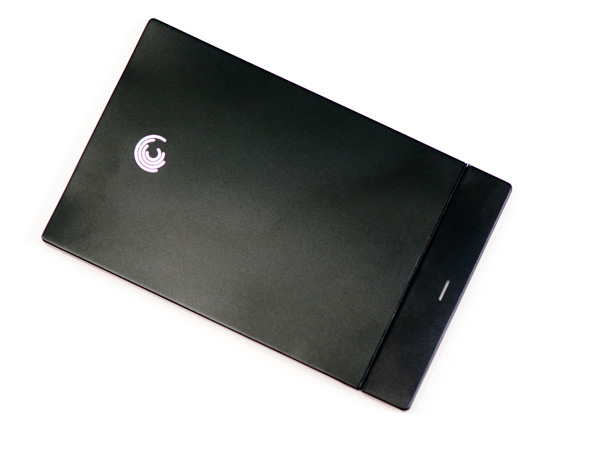
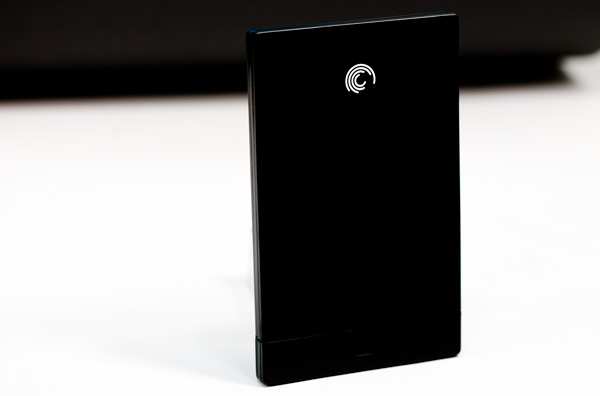
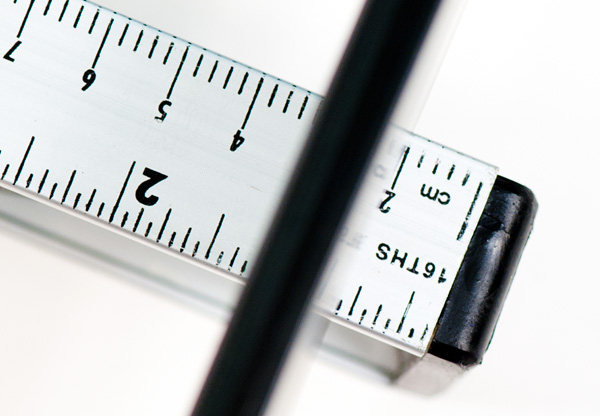
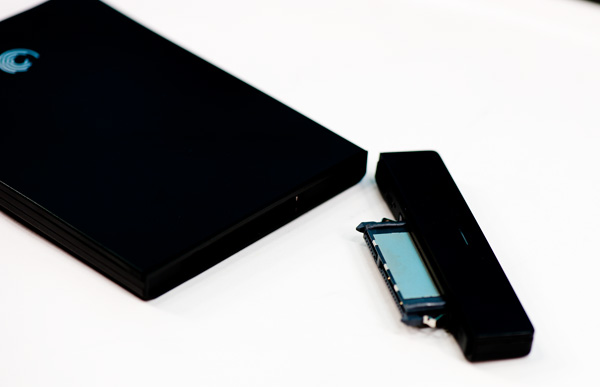
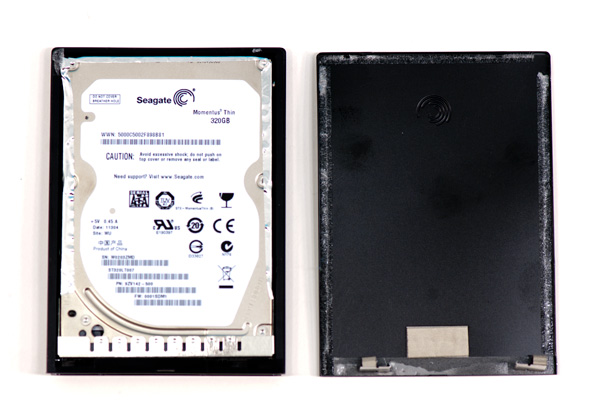
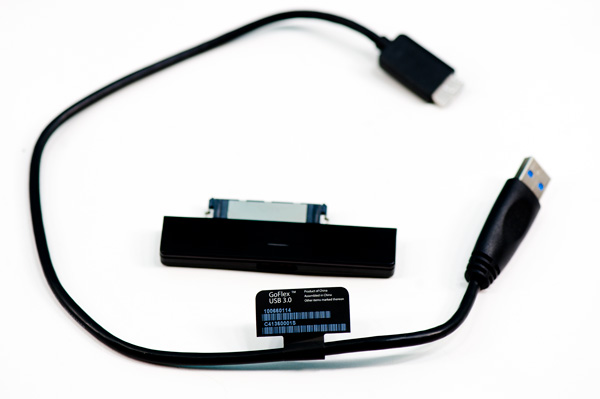
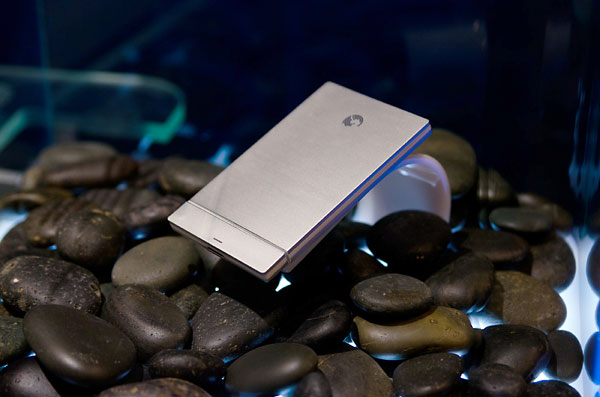








30 Comments
View All Comments
Nataku - Wednesday, April 6, 2011 - link
i thought the price is just 99.99? thats like, 20~30 difference at most...PubFiction - Wednesday, April 6, 2011 - link
Note books usually come with 1 harddrive if they are smaller however almost all the larger model notebooks I have seen come with 2 bays. 16" on up. And they come with those 2 bays and an optical drive. With SSDs i pretty much tell everyone spring for 1 with 2 drives.7Enigma - Wednesday, April 6, 2011 - link
Pretty sure the key word was portable and 16" is definitely quite large to tote around all the time. I agree with you though, if you have the double-bay there are few things better for overall performance and sanity than a small SSD boot drive.erple2 - Wednesday, April 6, 2011 - link
The only thing I can think of is a large boot drive and no extra spindle drive. But that's not cheap.juhatus - Wednesday, April 6, 2011 - link
Also this kinda usb-powered is great for that living room boxee box as a storage...ckryan - Wednesday, April 6, 2011 - link
I have a D series Dell Lattitude. I can put one SSD in the HDD bay, then the modular bay supports extra batteries, ODDs, FDDs, and of course another HDD. I sprung for the HDD drive bay because I seldom use the DVD drive anyway, and with a smaller capacity SSD I need some extra storage. I got tired of lugging around a USB 2.0 enclosure -- since I don't have USB 3 on my lappy anyway, I can't really see the Seagate as being advantageous to me. Still, I fall into the category of people who think buying an external device like this is kinda silly anyway. If you really need that few extra millimeters of thin, then buy it and be happy.chemist1 - Wednesday, April 6, 2011 - link
Anand, you mentioned that you never needed an external drive because you had plenty of storage on your tower plus in you lab. But there's a key reason even those with plenty of storage need an external drive: remote backup, i.e., in a separate building (think fire or theft) --or, if you're especially prudent, and your stuff is especially critical, in a separate city (think earthquake). Sure, there's the cloud, but most people don't have access to, say, 500 GB of cloud storage. Besides, if you do have to replace lost data, it's much easier to have a clone of your HD in a remote location, than to try restoring it through a download. I have a local backup that is updated continuously, plus a pair of external drives, stored in a remote location, that are updated ~ monthly.7Enigma - Wednesday, April 6, 2011 - link
Electrical surge is my main reason. I have over 10k pictures of my kids from birth through kindergarten. These are priceless. I would rather lose my car/house than these pictures. One of the first things I did was get an external hard drive and duplicate these pictures on the drive. I then took the external drive to my parents and copied everything to my dad's secondary 1TB drive. So unless all of PA falls into the ocean the pictures will be safe.I'm kinda the go-to guy at work for helping people fix their computers after they crash and in the last year I worked on 2 systems. Both had stopped working after the power went out during storms. In one case the PSU failed to protect the computer and fried everything. In the second case the PSU took the damage and saved the components.
In the latter case my friend was very lucky. All of the pictures of his family (2 small kids) were on that computer and NOT BACKED UP. First thing I did after replacing his PSU was sending him an email with a deal on an external HDD. There is no excuse for not having protected storage as you never know what can happen. And since everyone is jacked in to broadband internet a lot of people feel uplugging the computer/power strip is enough to guarantee being safe. It's not.
softdrinkviking - Wednesday, April 6, 2011 - link
how is going to have a tiny plastic sleeve around a drive going to impact durability?not that traditional external drives are especially safe to drop, but i would be extra worried about even a slight impact with so little protection.
i have had a couple of drives get the click of death after a trip, so i am wary.
Spoelie - Wednesday, April 6, 2011 - link
Single platter design restricts capacity to current SSD levels it seems, as evidenced by the Intel 320 screenshot. So the price is the only differentiating factor, not limited capacity.Is eSATA still faster than USB3 or is the difference minimal? Given there is no "protocol" conversion taking place.. You would need an extra cable for power though :s